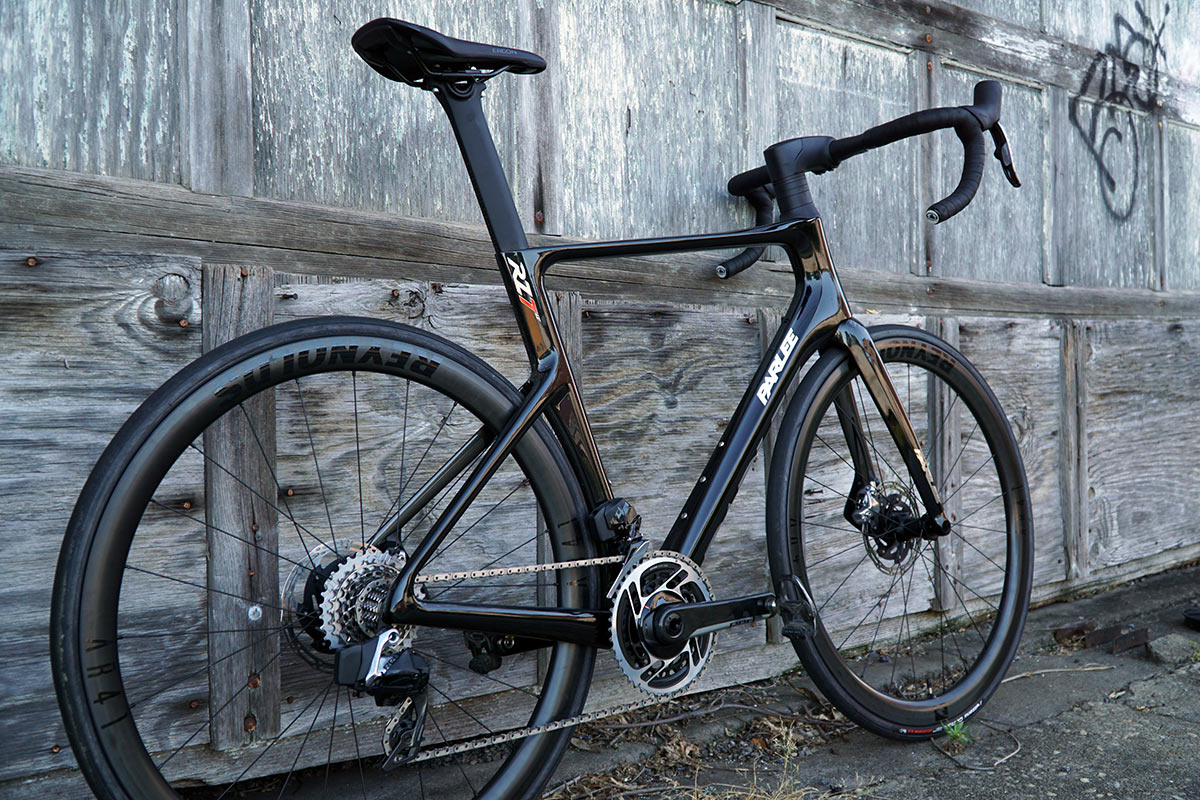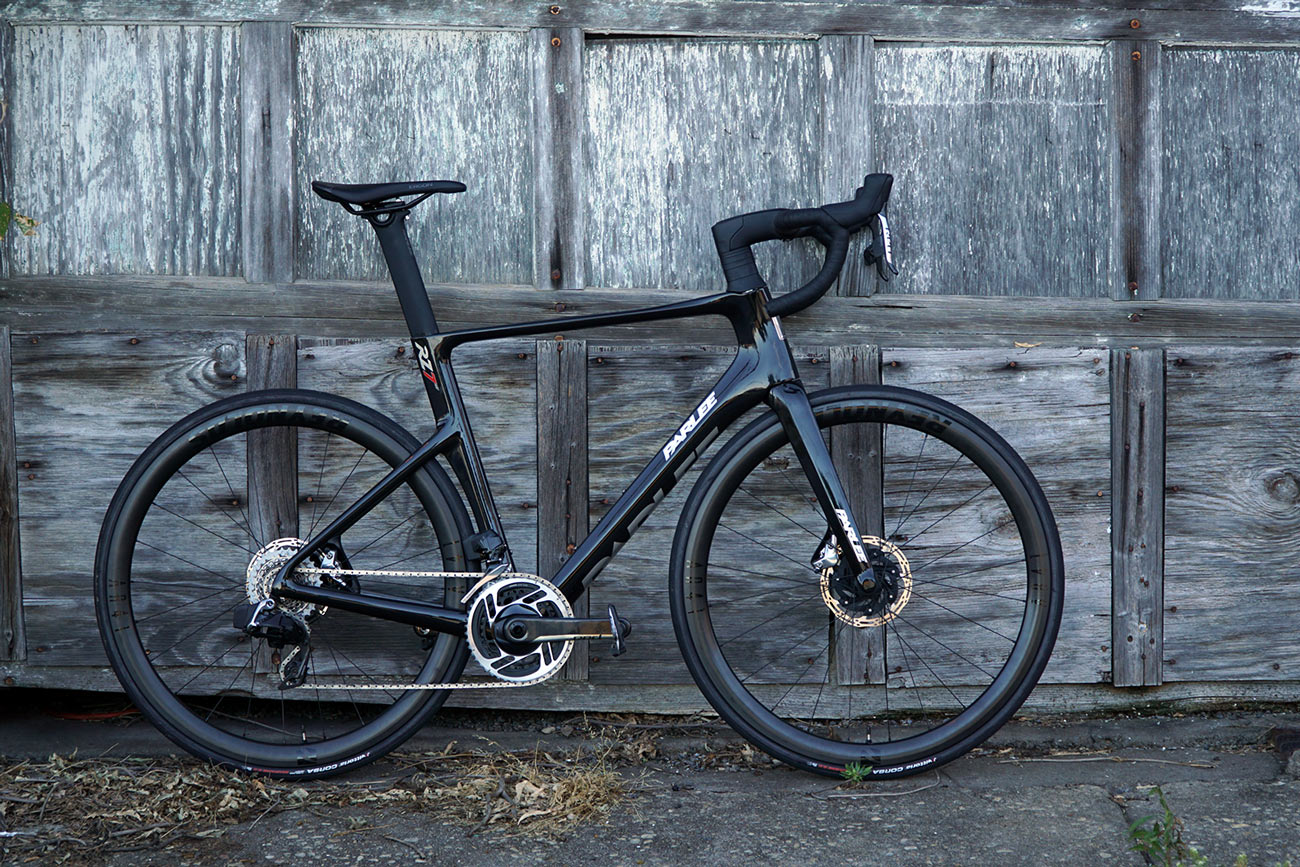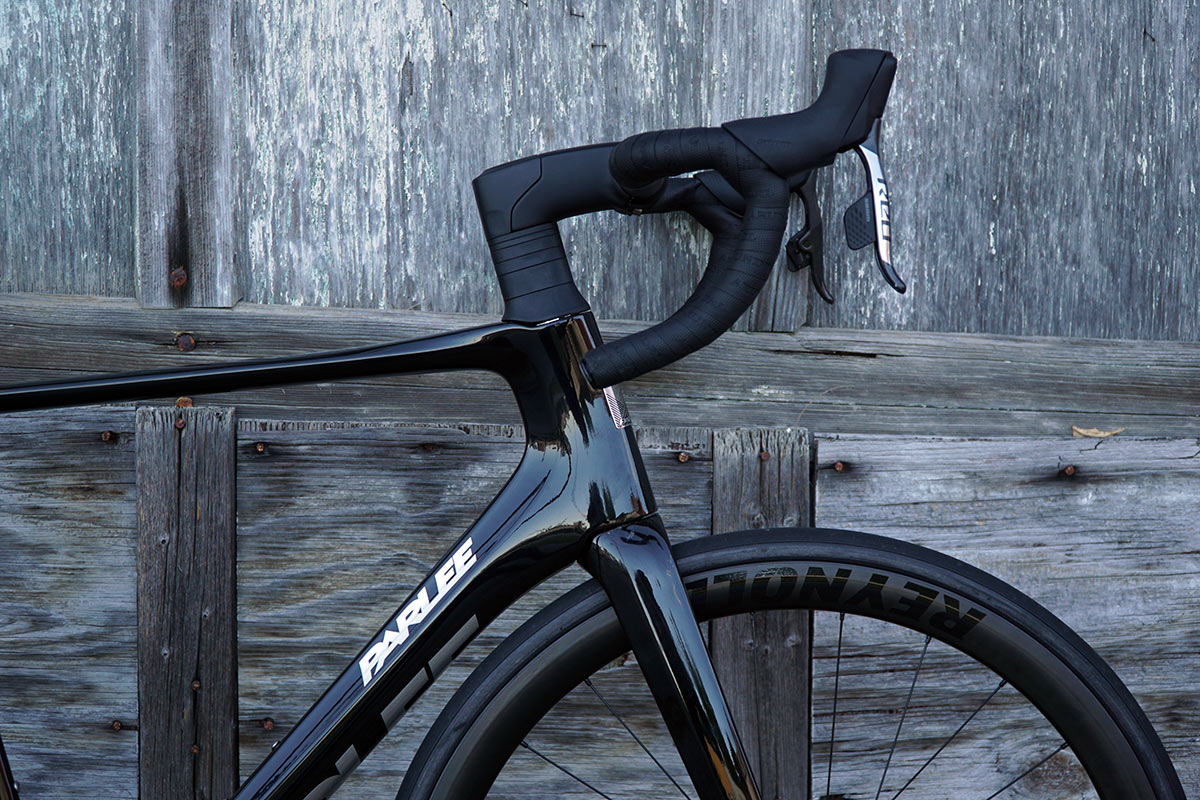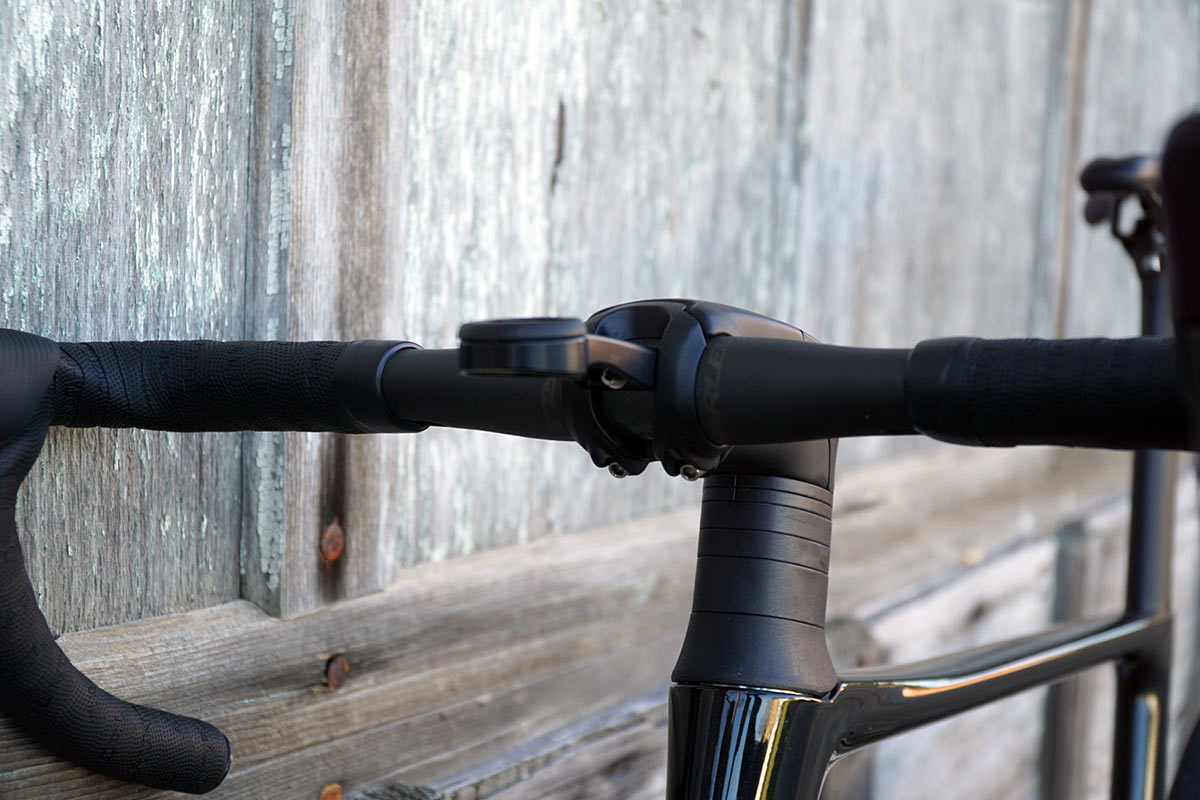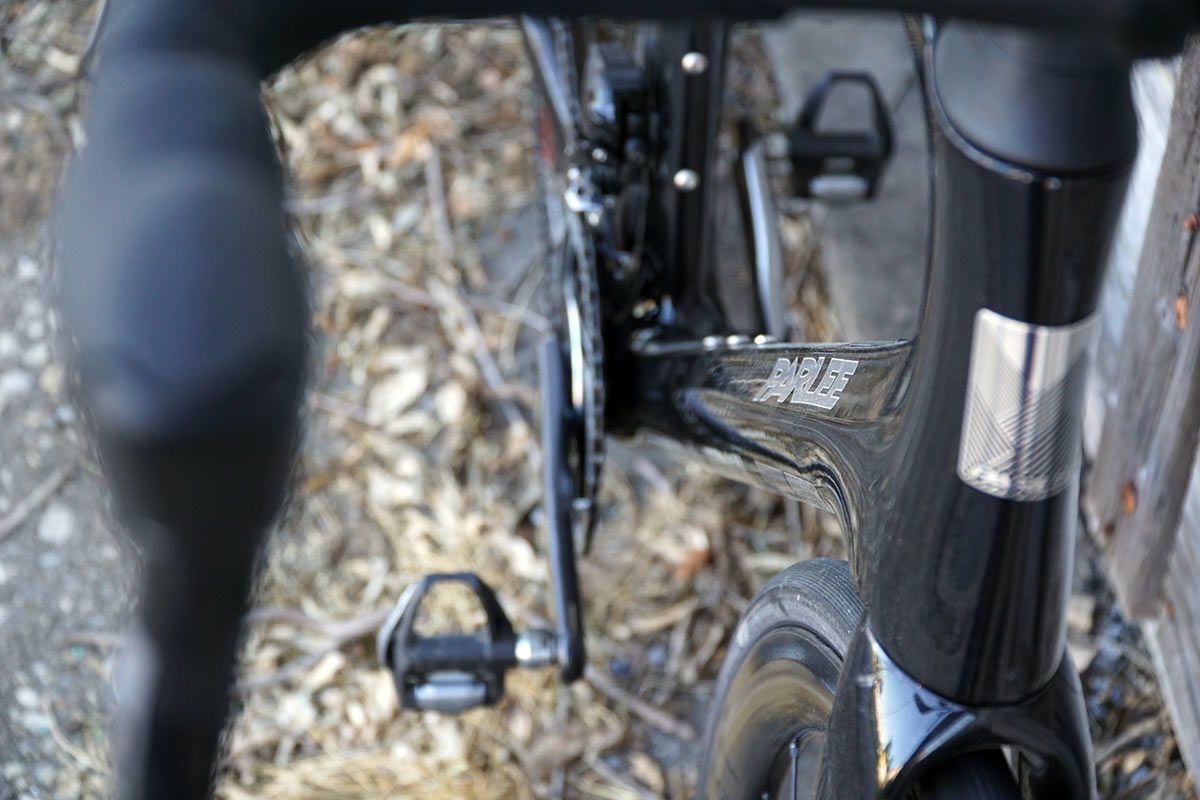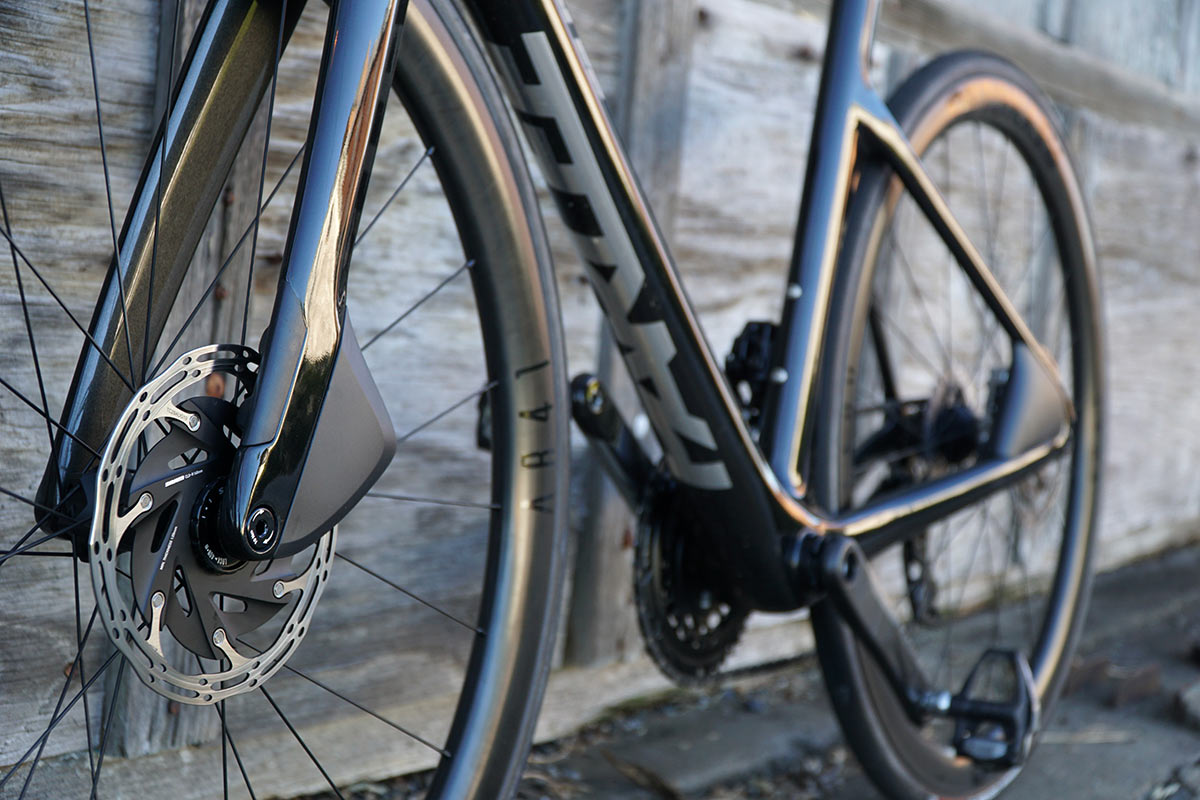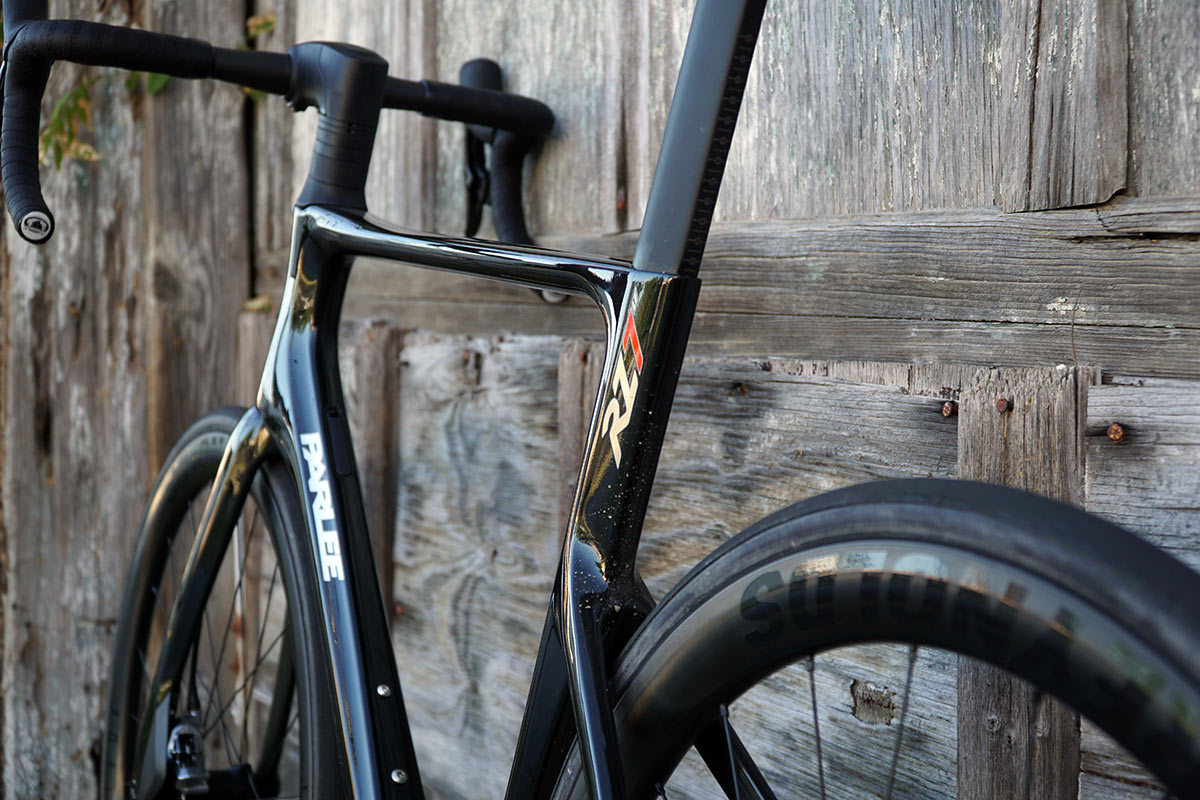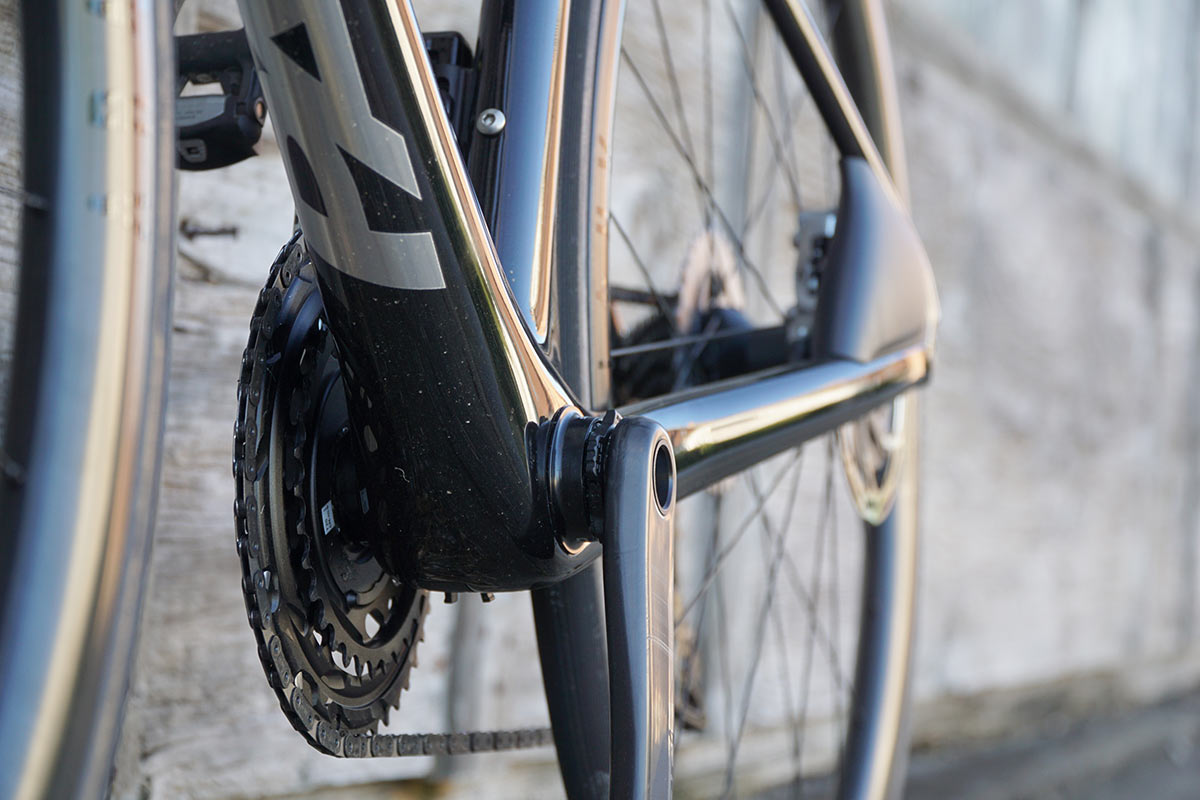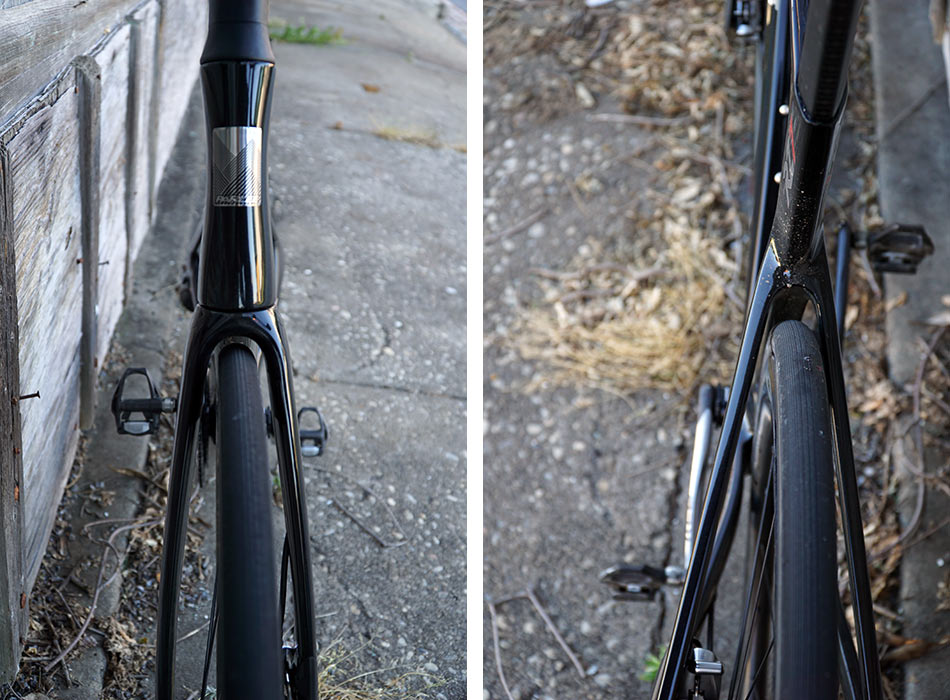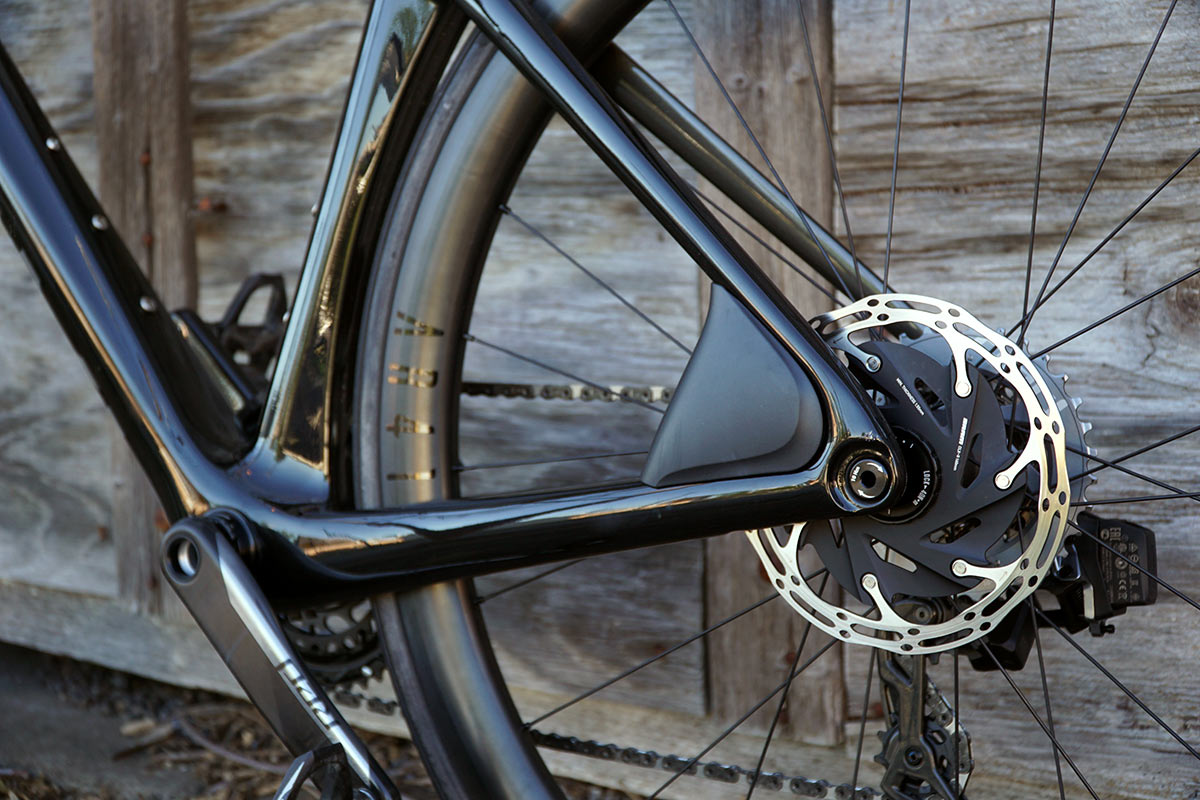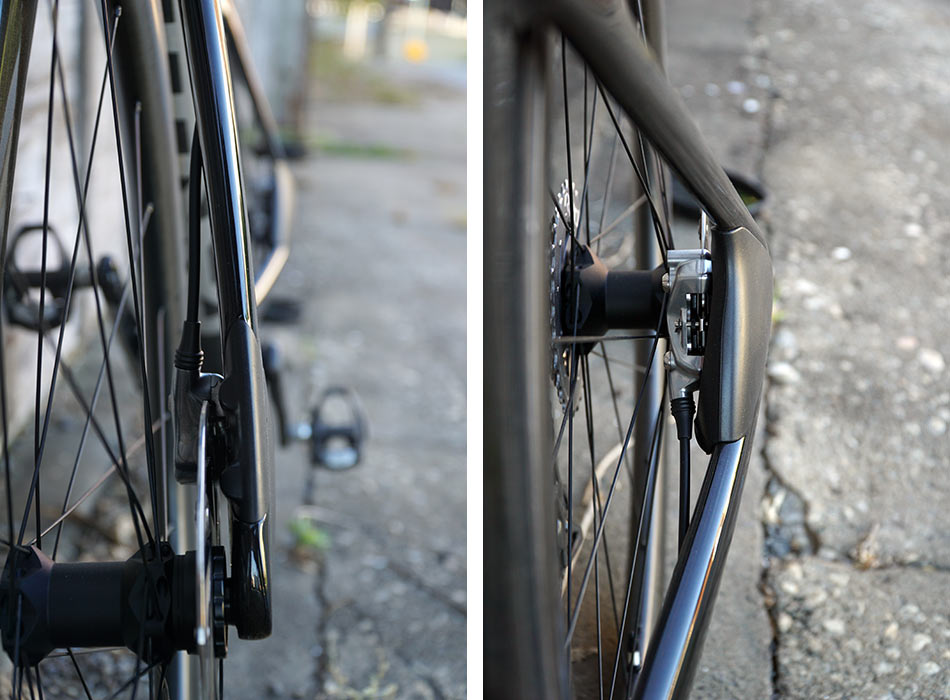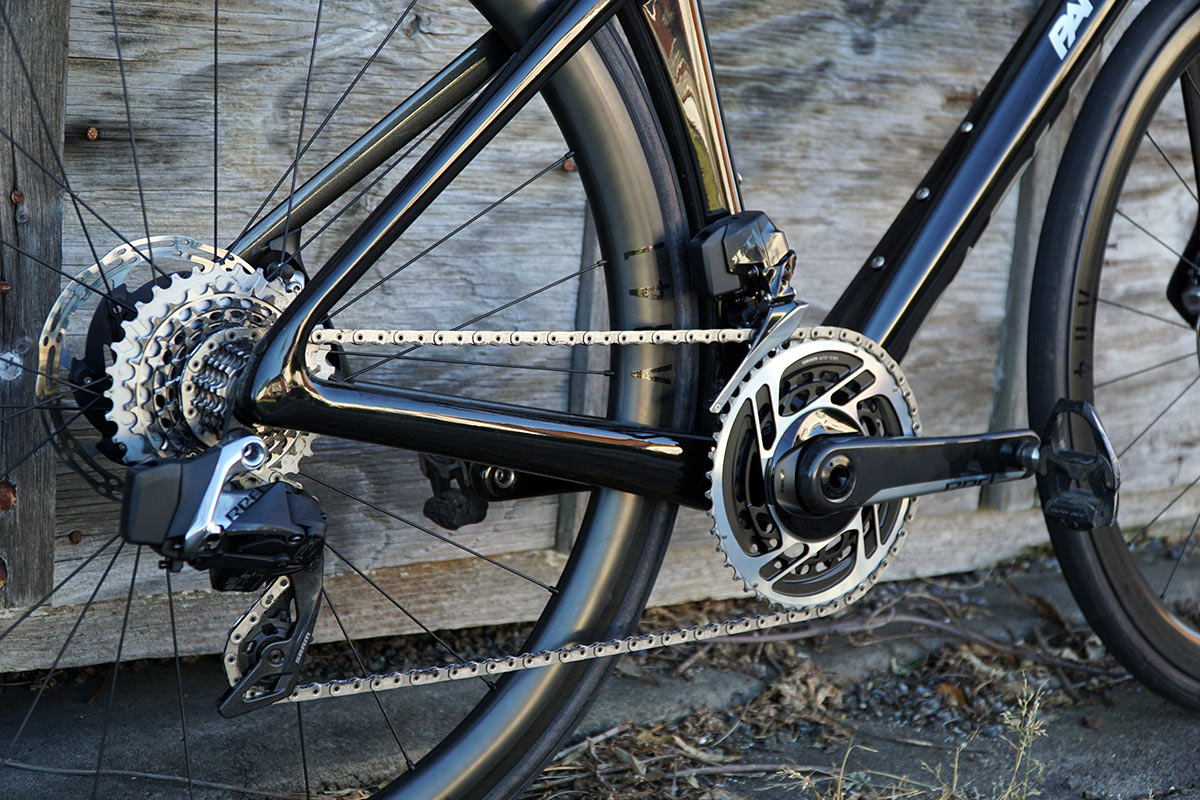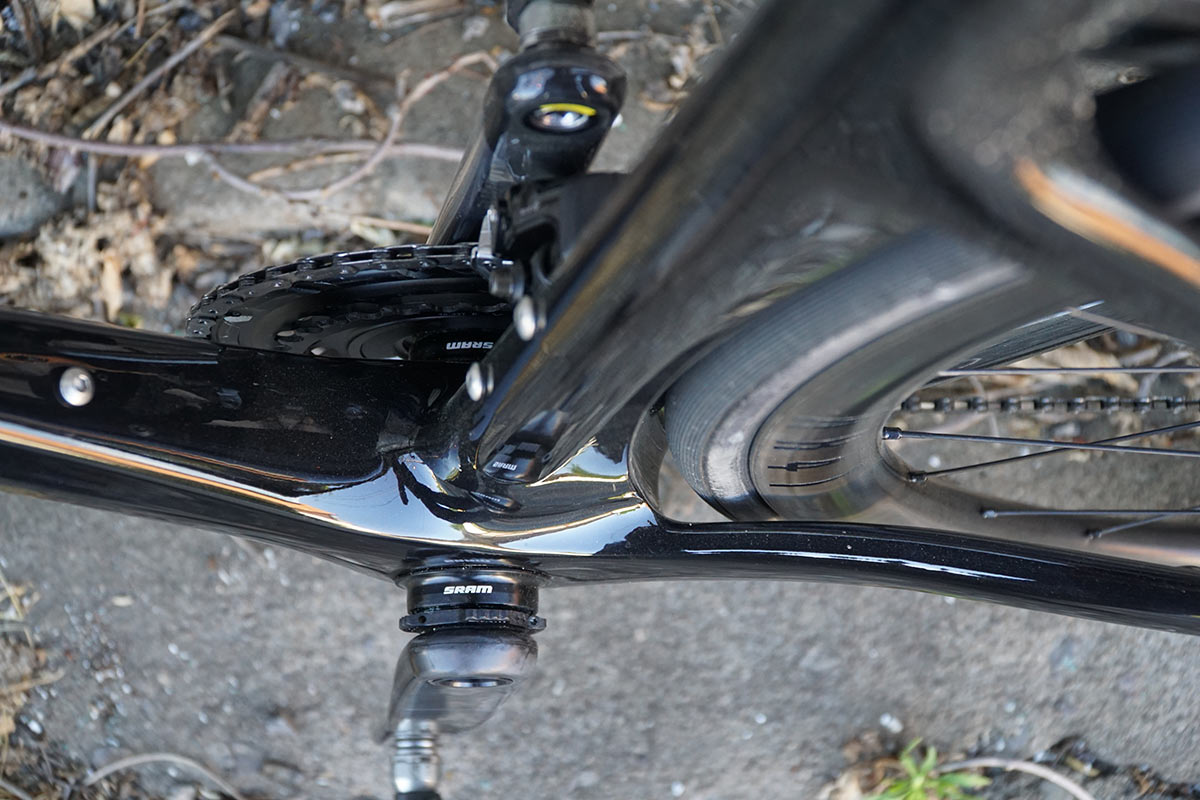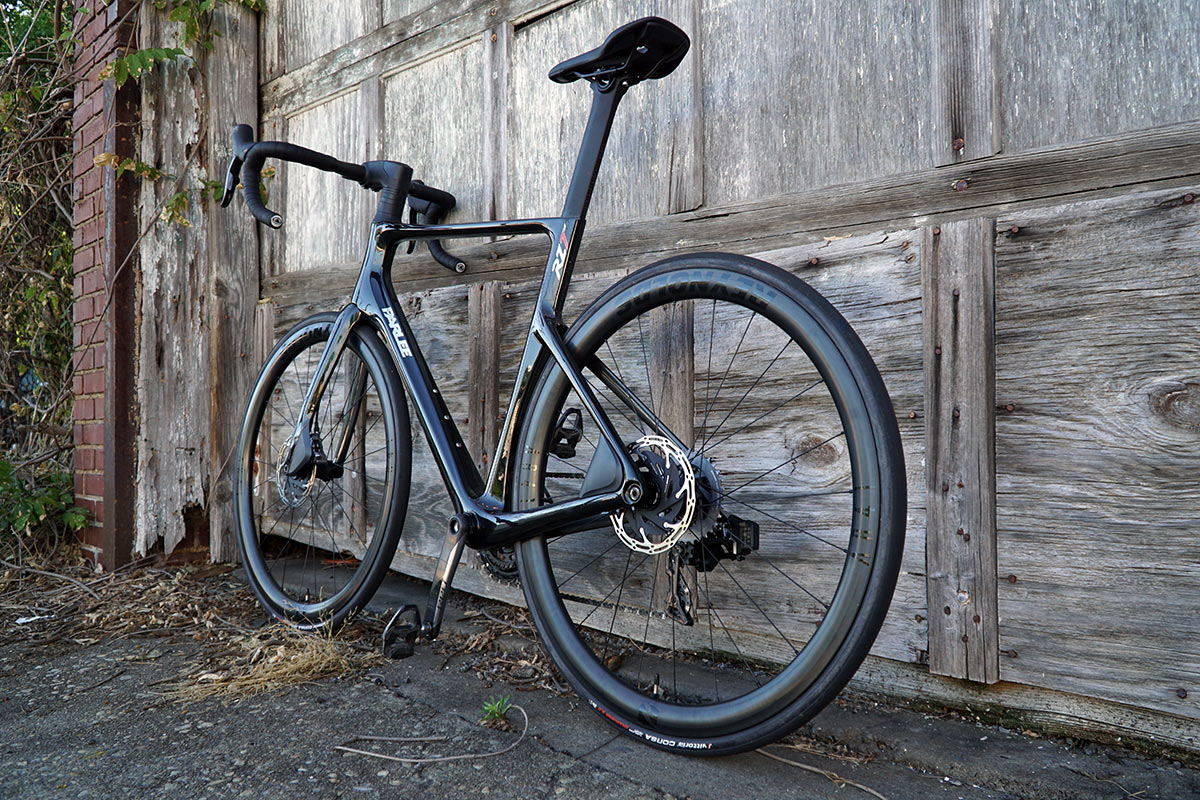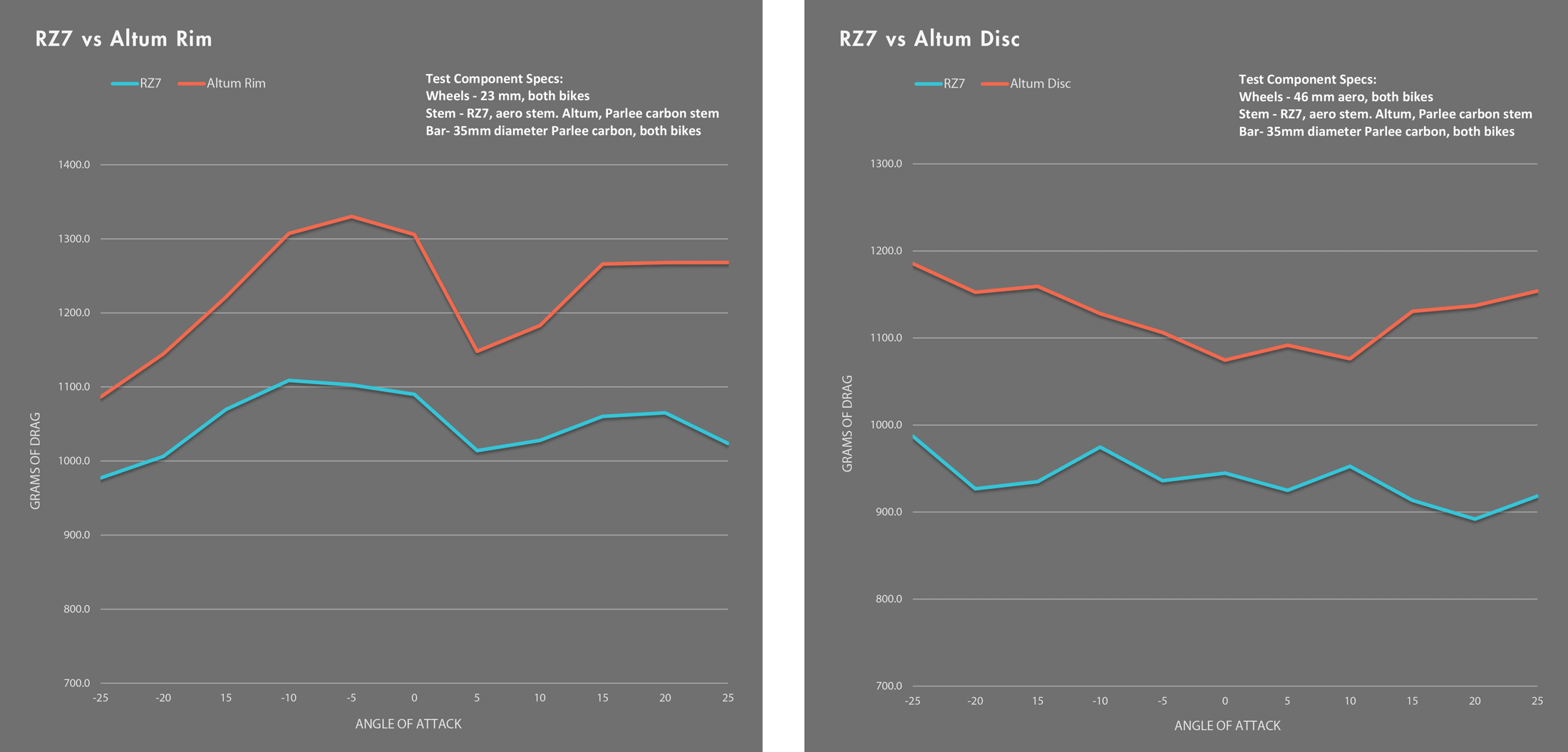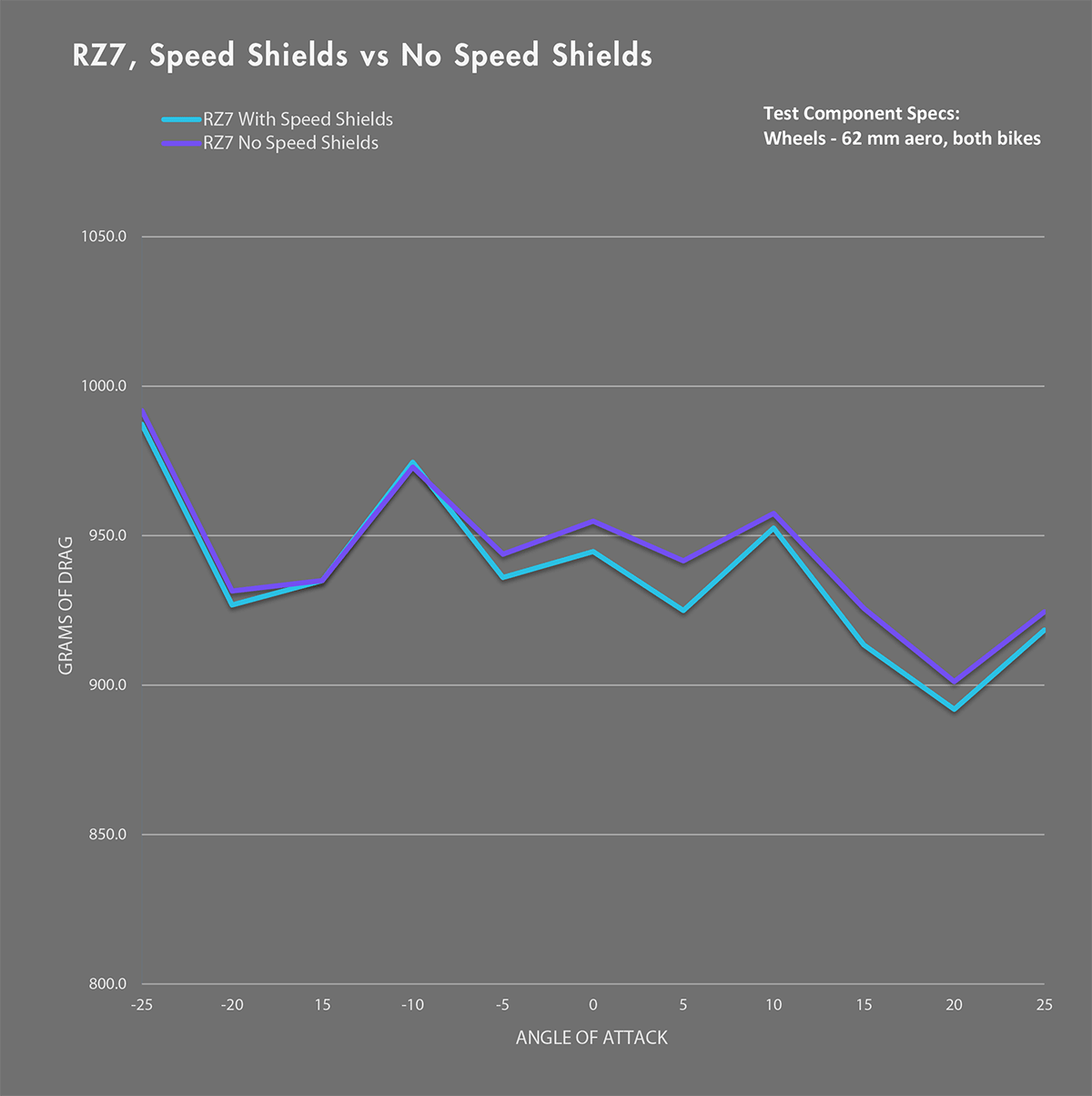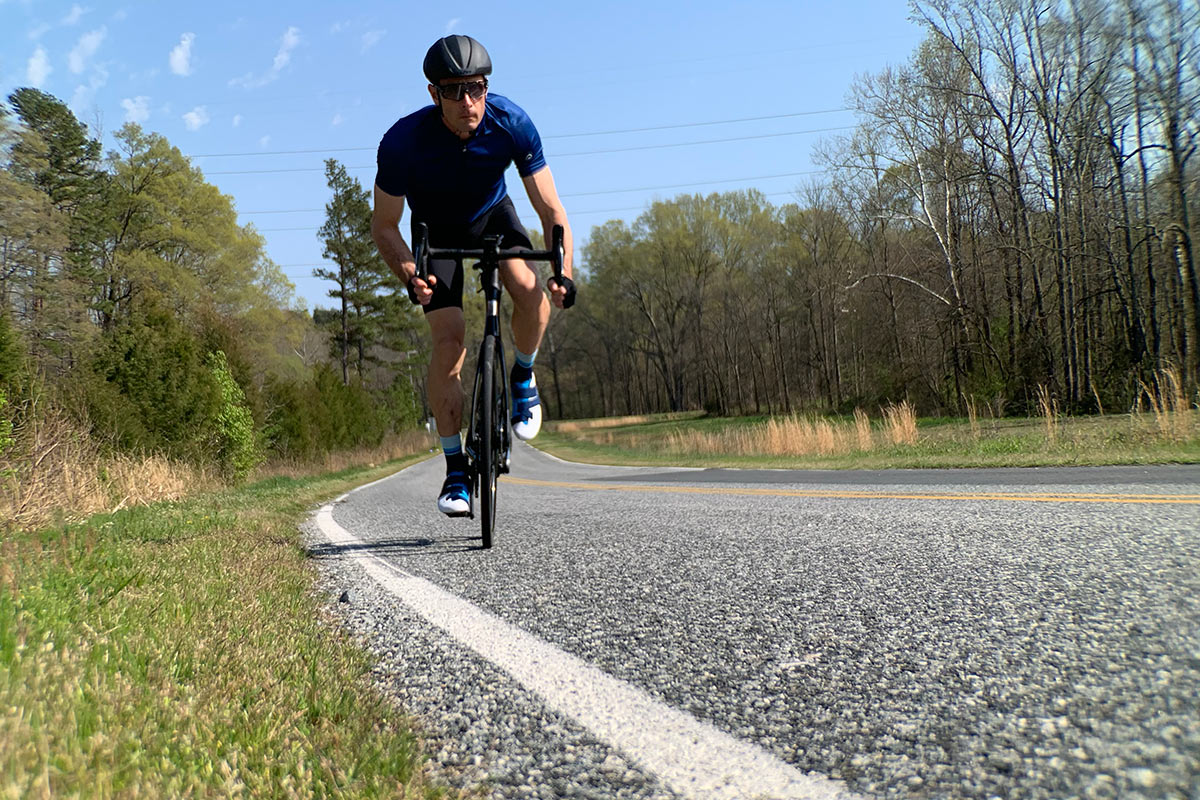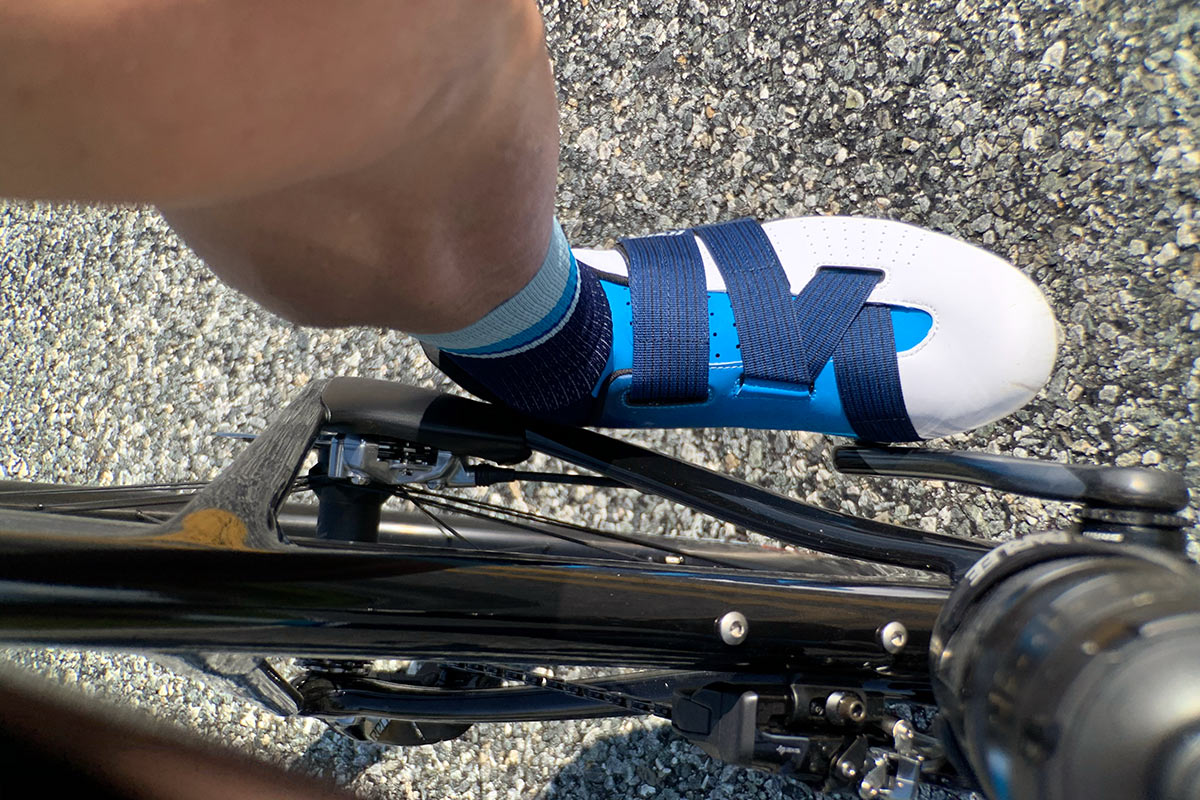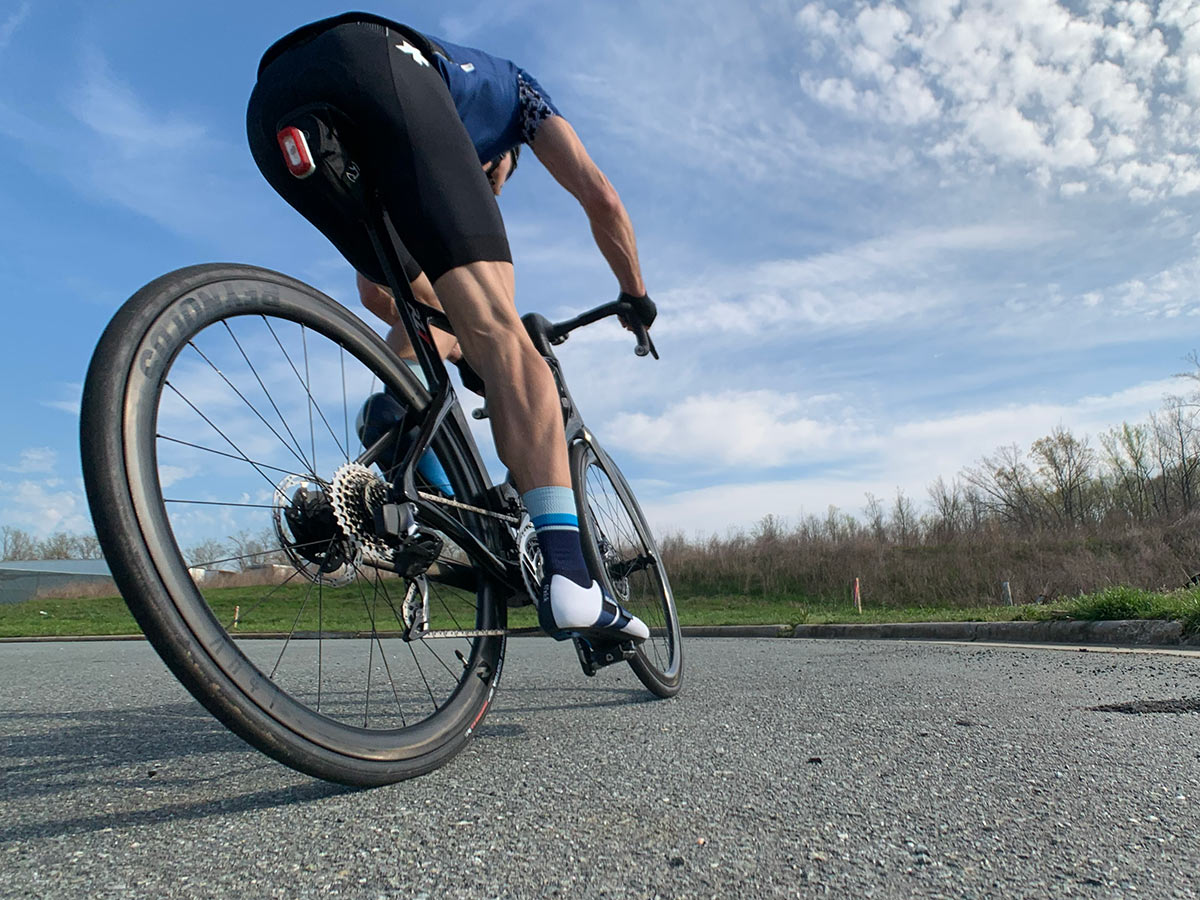Introduced at Sea Otter 2019, the Parlee RZ7 garnered mixed opinions for its looks, but one thing was for sure, it left nothing to chance when it came to cheating the wind. This road bike took the best aero features of their TTiR triathlon bike, which is arguably the first production bike with disc brake covers. And one that proved faster than the rim brake version it replaced.
As with the TTiR, Parlee took the RZ7 to the A2 wind tunnel, validating their unique Recurve tube profiles in the lab. Fortunately, those results (and shapes) work just as well in the variable, incessant winds that inevitably blow on every ride. Here’s my long term review, starting with a close-up look at the tech…
The Parlee RZ7’s very unique details
Let’s just get it out of the way…the looks of my review bike might be polarizing, but imagine it with a shorter stack height of steering spacers. And if you still don’t like it, tough nuts, because this bike’s ride quality is amazing.
I did a full bike fit with Parlee before reviewing their Z5, and this is what a Parlee bike looks like for me. In fact, they recommend any customer gets a fit done before purchase so that they can build the bike to fit you. Personally, I don’t mind the way this looks, and the fact that it fit me perfectly superseded my vanity.
Besides, there’s a good reason for the design. Which is…
…it allows for a wide range of fits on a single frame design. Parlee’s Tom Rodi puts it like this:
“Everyone wants a ‘performance’ road bike, even if their fit or flexibility is more in a ‘recreational’ place. This design keeps the bike looking fast and racy while allowing 99% or riders to get comfortable on it.”
There’s more to it than just a bunch of spacers, though.
The leading edge is their own handlebar and stem. The bar has a comfortable, slightly oval profile across the tops. I liked it, but also think they could make additional small gains in comfort (and aerodynamics) by flattening it just a bit more.
The headtube narrows in the middle, and itself seems quite sleek, which is amazing considering it’s hiding an oversized 1.25″ to 1.5″ tapered steerer on Parlee’s custom, RZ7-specific fork.
If that steerer girth seems like overkill for a road bike, it’s what allows them to use up to 100mm of spacer under the stem. Rodi says traditional 1-1/8″ steerers safely max out around 35-40mm of spacers. But that would have limited the range of fit adjustments on this bike, so they went bigger.
The stem’s locking faceplate design means only two bolts, on the bottom, further smoothing air flow. Note the small indents made on the brake hoses (click image to enlarge)…visible, but not affecting performance. Their location is a static point, the only movement would be further down inside the steering column where they exit the steerer tube.
The brake hoses and any shift wiring run through a custom compression nut, which makes overall assembly similar to traditional stems and top caps. The only difference here is the body of the stem is raised slightly so there’s room for the hoses and wires to curve down into the steerer. This is also why the bike is not compatible with mechanical drivetrains, because those bends are far too sharp for cables.
The hoses (and wires, if you ran EPS or Di2) exit through a port that sits just above the crown, feeding everything into the downtube. That port has a rubber grommet to prevent chafing, and the fork’s rotation is limited to just less than 90º per side to prevent things from pulling too far inside. Check our launch coverage to see more about how they prevent the bars from spinning around during a wreck.
Their Recurve tube shaping is most obvious on the downtube. It’s similar to a truncated Kamm Tail airfoil shape, except that the trailing half’s curve is reversed, creating a concave shape.

The flatter back area widens toward the bottom, for two reasons. First, because that’s where a water bottle is going to mess up aerodynamics anyway. And second, to create a more flowing shape into the bottom bracket that maximizes torsional stiffness for good power transfer. Other photos below show this transition even better.
The feature that stands out the most (visually, anyway), are the carbon fiber SpeedShield brake caliper covers. They bolt on from the inside of the fork leg and rear dropout section, leaving a perfectly smooth surface on the front and outside. More on those in a minute…
The rest of the bike uses more traditional aero shaping, with a custom seat post that matches the truncated airfoil of the seat tube. The top of the post uses a two-position cradle mount, letting you get 0mm or 25mm of offset from the same post.
Tire clearance is rated up to 700x32mm tires, but comes with 700×28 Vittoria Corsa tires. I rode the original spec, which was Reynolds AR41 wheels and, unfortunately, tube-type tires. Now the bikes ship with ENVE Foundation Series 45 wheels with the tubeless-ready tires.
Parlee says their testing showed that the bike is absolutely fastest with 60-75mm deep aero wheels on it. But they spec 40-50mm deep rims because, they say, they’re so close in speed and drag figures to the deeper rims (on this bike), but are far friendlier to normal riders. I’d say they’re a lot lighter, too, which is a win for anything that rotates.
OK, the SpeedShield disc brake covers. I like them. You may not. But they work. And we have the charts and graphs below to prove it. They only shield part of the brake calipers, more so on the rear, so there’s no concern over heat buildup creating brake fade…they still get plenty of air flow.
What’s more interesting is the driveside. Parlee uses custom thru axles that are 6mm shorter in the front and 10mm shorter in the rear. The dropouts still fit standard 12mm thru axle disc brake hubs, but stop a bit shorter to allow Parlee to use a closed end. This, too, helped reduce drag. And it looks sweet.
Below the seatstays, the seat tube follows the curve of the tire to smooth airflow there, too.
It looks fast, and it is.
Parlee RZ7 aero charts, graphs & actual weights
Parlee took the RZ7 and their Altum road bikes to the A2 Wind Tunnel, testing their aero road bike design against both the rim-brake and disc-brake versions of the Altum. Each comparison used the same cockpit, tire widths and pressure, and rim depths. This allowed them to do a true apples-to-apples comparison with minimal variables.
Which is also why they didn’t test against other brand’s bikes, because, Rodi said, that would introduce too many variables and not necessarily produce useful info. The results in both cases were a reduction in drag by 100g to 200g, depending on wind angle.
They also tested the bike with and without the SpeedShield disc brake covers. While minimal, the covers did reduce drag at almost every wind angle.
My size Large test bike weighed in at 17.79lb (8.07kg), which is very good for an aero bike with mid-depth aero wheels and tubes in the tires. You can download Parlee’s geometry chart as a PDF to compare all sizes.
The Parlee RZ7 comes in four complete builds, with either SRAM AXS (Force or Red) or Shimano Di2 (Ultegra or Dura-Ace). Prices range from $7,199 to $9,999 and include the basic paint scheme shown here. Custom paint available for an upcharge.
Parlee RZ7 ride review
Looks are one thing, but performance is what counts in the end. Straight on, the bike is narrow and slices through the wind. It also hammers, with nary a hint of frame flex.
While some deeply aero bikes can have a wooden, almost dead feel. Not this one. Despite the dramatically different look from their round-tube bikes, the RZ7 maintains Parlee’s signature ride quality. If you haven’t ridden a Parlee and you have the means to, I highly recommend it. There’s just something about the way they feel and handle that nails what a road bike should be.
My only gripe with the RZ7 was heel clearance. The stays are a bit wider than other disc brake road bikes I’ve ridden, and if I got lazy about my left foot’s position, it would brush against the stay. Not every pedal stroke, but enough to be a concern if you typically ride heels-in. I didn’t have the same issue on the drive side, and when I mentioned it to Parlee, Rodi said I’m the first person to mention it.
With ride quality dialed, what struck me most about the RZ7’s performance was its imperviousness to winds. On calm days, it’s fast as…lightning. On windy days, it’s still really damn fast.
There wasn’t a single wind condition I rode in where this bike didn’t defy the soul-sucking gusts that can break down even the hardiest of riders. It almost made it so the wind didn’t matter.
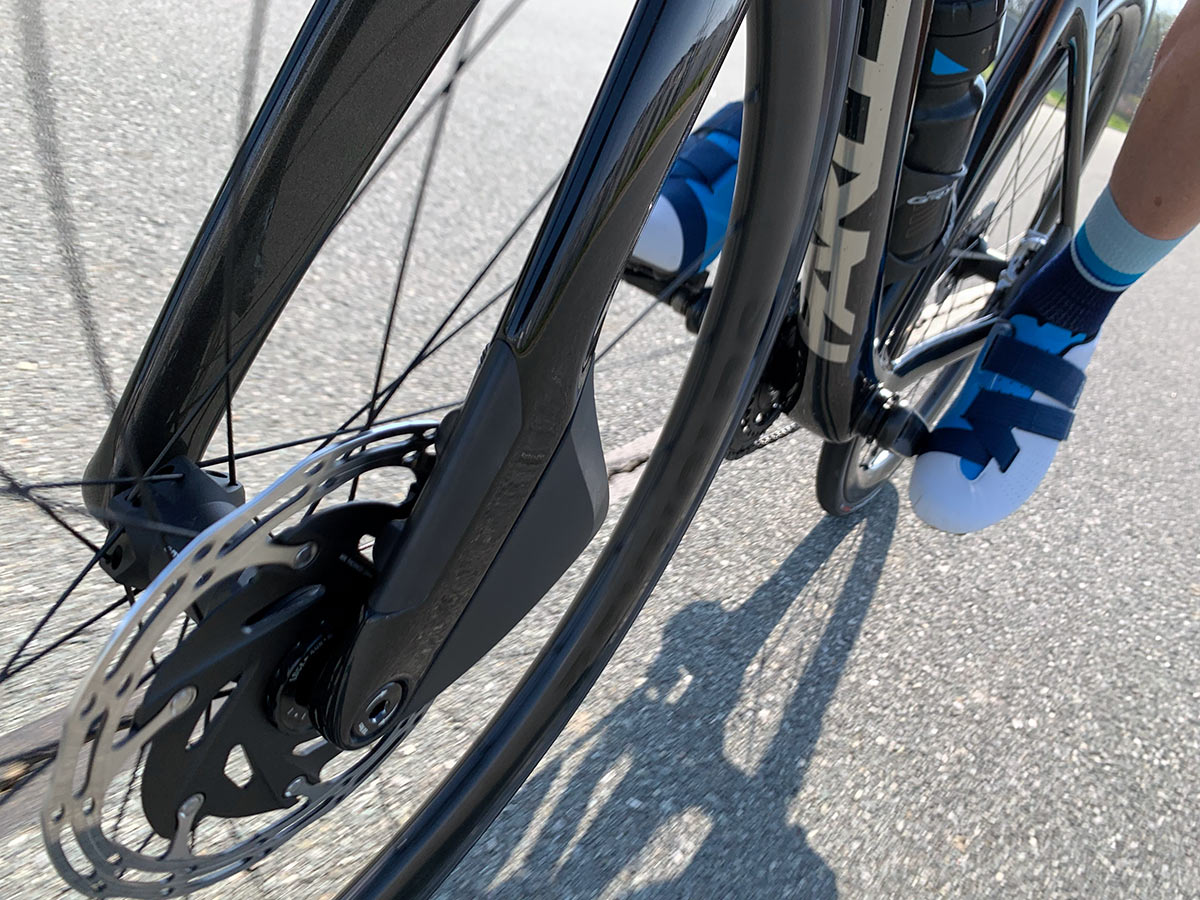
With a top shelf build and proprietary cockpit parts, the wheels and saddle are about the only areas left to upgrade. The current spec ENVE Foundation 45 wheels are about 100g lighter (0.22lb) than the Reynolds AR41 I tested it with. Upgrading from the Foundation 45 wheels to ENVE SES 4.5 AR wheels would drop about 180g (0.4lb), and going tubeless would shed another ~100g (0.22lb).
Switching to a full carbon saddle could save a few more grams, putting you around 16.9lb (7.67kg) for a complete bike, size large, without diminishing aerodynamics…but also adding a couple grand to the price.
The point is, it’d be hard to make this bike a whole lot lighter. But it’d also be hard to find something that’s much faster that also rides so well.
The best way I can put it is this: If I always rode in windy conditions and had to choose one bike for every ride, the RZ7 would be that bike. That it also rides really well in normal conditions makes it a no brainer for anyone seeking a really fast bike.
